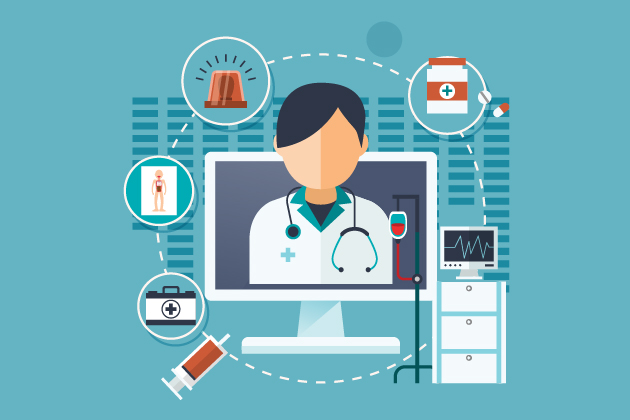Telemedicine is the delivery of healthcare services remotely using telecommunication technology. This can include video conferencing, phone calls, and the sharing of medical information via the internet. The goal of telemedicine is to provide patients with access to medical care regardless of their location, which can be particularly beneficial for those living in rural or remote areas, or for those with mobility issues.
Telemedicine has been around for several decades, but has seen a significant increase in popularity in recent years. One of the main drivers of this increase has been the development of technology that makes it easier and more affordable to conduct telemedicine consultations. For example, the widespread adoption of smartphones has made it possible for patients to have video consultations with healthcare providers from anywhere, at any time.
One of the most common forms of telemedicine is known as telehealth. This is a broad term that encompasses all types of remote healthcare services, including telemedicine. Telehealth can include virtual visits with a doctor, nurse, or other healthcare professional, as well as remote monitoring of a patient's condition.
Another way telemedicine can benefit patient is virtual care, also known as telecare. This is the provision of healthcare information and support to patients in their own homes, allowing them to manage their condition without having to travel to a healthcare facility. This can include things like monitoring vital signs, providing medication reminders, or providing education and support on a patient's condition.
Telemedicine also has several benefits for healthcare providers. These include the ability to see more patients in a shorter amount of time, which can lead to increased efficiency and productivity. Additionally, telemedicine can reduce the need for healthcare providers to travel to see patients, which can save them time and money.
One of the most essential benefits of telemedicine is access to specialists. This can be particularly beneficial for patients living in rural or remote areas, who may not have easy access to specialized healthcare services. Through telemedicine, they can consult with a specialist from a hospital or clinic in a different location, allowing them to receive the care they need without having to travel long distances.
Telemedicine can also be an important tool for improving healthcare outcomes. Studies have shown that patients who use telemedicine have lower rates of hospitalization and readmission, and better outcomes for chronic conditions such as diabetes, heart disease, and respiratory illness.
Despite the benefits, telemedicine has its challenges. One of the main challenges is ensuring the quality of care provided. In order to ensure that patients receive high-quality care, telemedicine providers must have the appropriate training, technology, and support to deliver care remotely.
Another challenge is the reimbursement and billing of telemedicine services. To be covered by insurance or a government health plan, telemedicine services must be provided under certain circumstances. Also, the billing codes used to report telemedicine services differ from those used for in-person services.
In conclusion, telemedicine is a promising technology that has the potential to improve access to healthcare, particularly for patients living in rural or remote areas or those with mobility issues. It also has the potential to improve healthcare outcomes and reduce healthcare costs. However, in order to achieve these benefits, it will be important to overcome the challenges of ensuring the quality of care, reimbursement, and billing.
Link: AI
Image courtesy: Rmmagazine


No comments:
Post a Comment